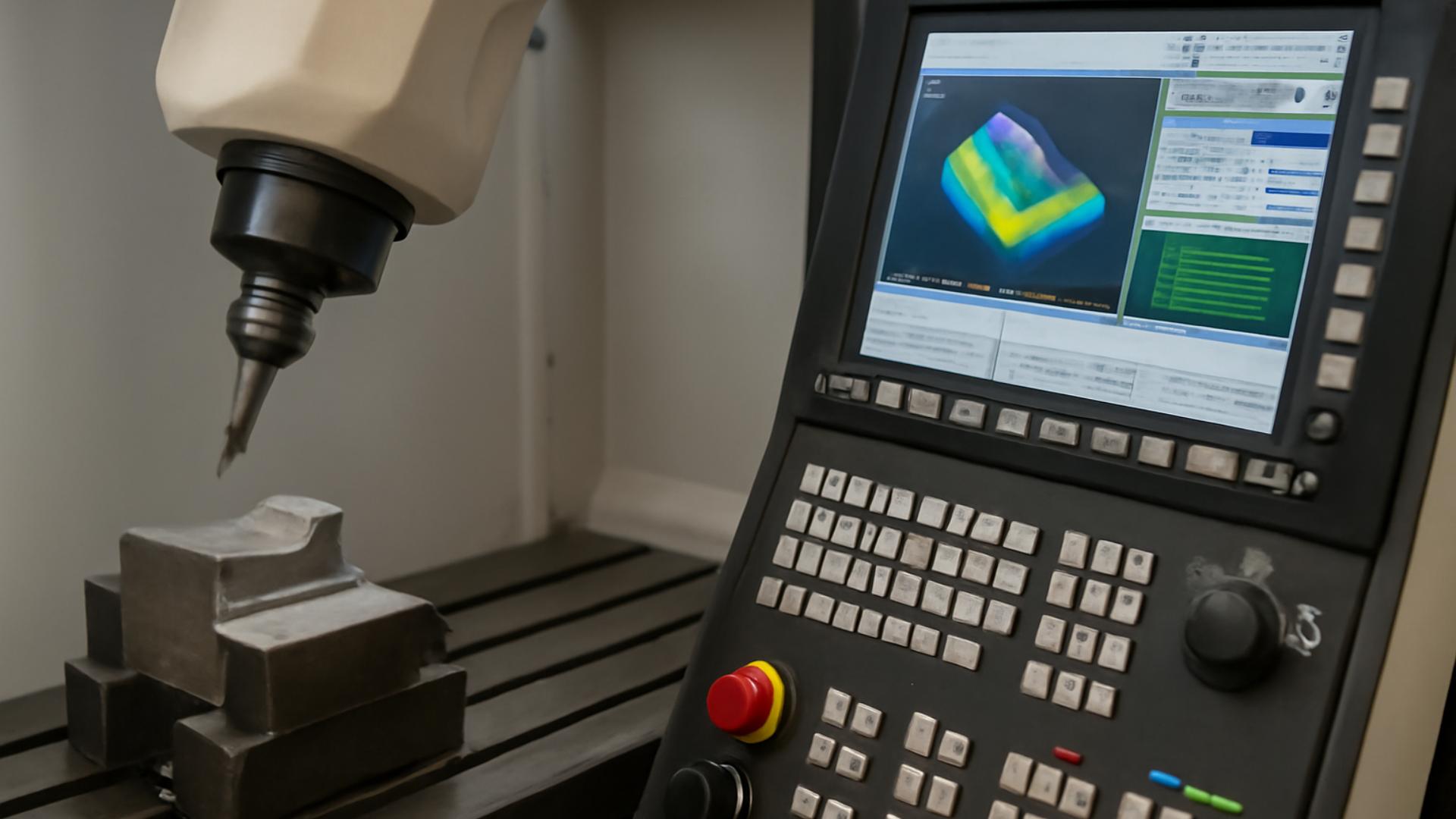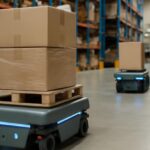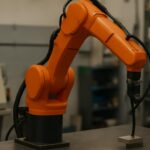Digital manufacturing is more than just a buzzword; it’s the wave of the future that is reshaping the very fabric of industry. In a world where technological advancements are at the forefront, the factory floor is transforming from a place bustling with human activity into a seamless blend of automation and data-driven processes. Companies are not merely adapting; they are revolutionizing. This transformation is driven by the need for increased efficiency, sustainability, and innovation. As we delve deeper into this topic, we will explore how digital manufacturing is setting new standards for industries and supply chains worldwide.
The New Face of Factories: Embracing Digital Transformation
Digital transformation is not a distant future; it’s happening right now in factories and industries across the globe. This metamorphosis is not just about adopting the latest technologies; it’s about a holistic shift in the way manufacturing is perceived and executed.
The Revolution Begins
As we step into this digital era, factories are embracing an identity that marries traditional engineering with cutting-edge digital solutions. The emergence of technologies such as the Internet of Things (IoT), artificial intelligence (AI), and machine learning has enabled a transformation that goes beyond mere automation. Now, we are looking at intelligent systems that optimize production processes in real-time.
Redefining Efficiency
Efficiency is no longer measured by the sheer output but by the precision and agility of manufacturing operations. With digital technologies, companies can track and analyze every stage of the production chain, identifying bottlenecks and addressing them swiftly. This results in not just reduced waste but also enhanced product quality and faster time-to-market.
Data: The New Lifeblood
In this new industrial paradigm, data is the lifeblood. Every machine, every process, and even every employee can be connected to a digital network that feeds valuable insights back to managers. This wealth of information is transforming decision-making, enabling predictive maintenance, and fostering a more adaptive production environment.
Harnessing the Power of Digital Technologies
The rise of digital manufacturing has brought forth a plethora of technologies that are redefining traditional manufacturing operations. From smart factories to intelligent supply chains, let’s explore how these innovations are reshaping the industrial landscape.
Smart Factories: The Heart of Innovation
Smart factories are the epitome of digital manufacturing. These digitally connected environments leverage technologies such as IoT, cloud computing, and big data analytics to create a dynamic and responsive production ecosystem. By integrating smart sensors and devices, manufacturers can monitor and control production processes with unprecedented precision.
The Role of AI and Machine Learning
The deployment of AI and machine learning in manufacturing is transformative. These technologies enable systems to learn from data and improve operations continually. From optimizing supply chains to enhancing production efficiency, AI-driven insights are invaluable. Predictive analytics can foresee potential disruptions, allowing companies to proactively address issues.
Additive Manufacturing: A Game Changer
Additive manufacturing, commonly known as 3D printing, is revolutionizing production processes by enabling on-demand manufacturing. This reduces the need for large inventories and allows for customization and rapid prototyping. In an age where personalization is key, additive manufacturing offers limitless possibilities. {image_content}
The Benefits and Challenges of Digital Manufacturing
While the benefits of digital manufacturing are vast, it’s not without its challenges. As companies navigate this new terrain, they must weigh the advantages against potential hurdles.
Unparalleled Benefits
- Increased Efficiency: Digital transformation streamlines processes, reducing waste and optimizing output.
- Enhanced Flexibility: Companies can respond more swiftly to market demands and production changes.
- Sustainability: Reduced resource consumption and waste through precise data management.
- Real-time Monitoring: Digital technologies allow for real-time oversight of operations, ensuring quality control.
Navigating Challenges
- Cybersecurity Risks: The interconnected nature of digital systems poses cybersecurity threats.
- Skill Gap: There is a growing need for a workforce skilled in digital tools and technologies.
- Initial Investment: The upfront cost of transitioning to digital manufacturing can be significant.
Overcoming Obstacles
To leverage the full potential of digital manufacturing, companies must invest in training their workforce, implementing robust cybersecurity measures, and gradually phasing in digital systems to ensure a smooth transition.
The Future of Manufacturing: A Vision Beyond The Horizon
As we look towards the future, the horizon of digital manufacturing is expansive and filled with potential. Embracing this transformation means not only adapting to current trends but anticipating and driving future innovations.
A Connected Ecosystem
Factories of the future will be even more interconnected, with seamless integration across all facets of the production process. The emphasis will be on collaborative ecosystems where data flows effortlessly, creating a tapestry of efficiency and innovation.
The Rise of Autonomous Operations
We stand on the brink of a new era where autonomous systems will drive operations with minimal human intervention. While human oversight will remain crucial, autonomous technologies will take the lead in operational excellence, paving the way for unprecedented productivity.
Sustainability and Ethical Manufacturing
Future manufacturing will prioritize sustainability and ethical practices. From reducing carbon footprints to ensuring ethical sourcing of materials, digital manufacturing will empower industries to meet their social and environmental responsibilities.
Towards a Digital Revolution
As we continue to embrace these changes, the promise of a digital manufacturing revolution lies not just in technology but in the way industries collaborate, innovate, and evolve. The future is bright, and the possibilities are as boundless as our imaginations.
In the ever-evolving landscape of manufacturing, digital transformation stands as a beacon of progress, guiding industries towards a more connected and efficient future. The journey is not without its challenges, but the destination promises a world where technology and industrial prowess blend seamlessly. As we chart this new course, let us embrace the potential of digital manufacturing to transform not only how we produce but how we envision the future of industry.
FAQ
What is digital manufacturing and why is it important?
Digital manufacturing involves the use of digital technologies, such as computer-aided design (CAD), 3D printing, and data analytics, to enhance manufacturing processes. It is important because it allows for increased efficiency, reduced costs, and the ability to produce complex designs with greater precision.
How does digital manufacturing impact traditional production methods?
Digital manufacturing transforms traditional production by integrating advanced technologies that streamline operations. This shift reduces manual intervention, enhances precision, and accelerates production times, leading to more flexible and responsive manufacturing processes.
What role does data analytics play in digital manufacturing?
Data analytics in digital manufacturing involves collecting and analyzing data from various sources to optimize production processes. It helps manufacturers predict maintenance needs, improve quality control, and enhance decision-making, thus boosting overall productivity.
How does digital manufacturing contribute to sustainability?
Digital manufacturing promotes sustainability by minimizing waste through precise material usage and reducing energy consumption. It also supports the use of eco-friendly materials and enables local production, thereby decreasing the carbon footprint associated with transportation.
What are some challenges faced by industries in adopting digital manufacturing?
Industries may face challenges such as high initial costs, the need for skilled personnel, and the integration of new technologies with existing systems. Additionally, shifting to digital manufacturing requires a cultural change within organizations to embrace new ways of working.



